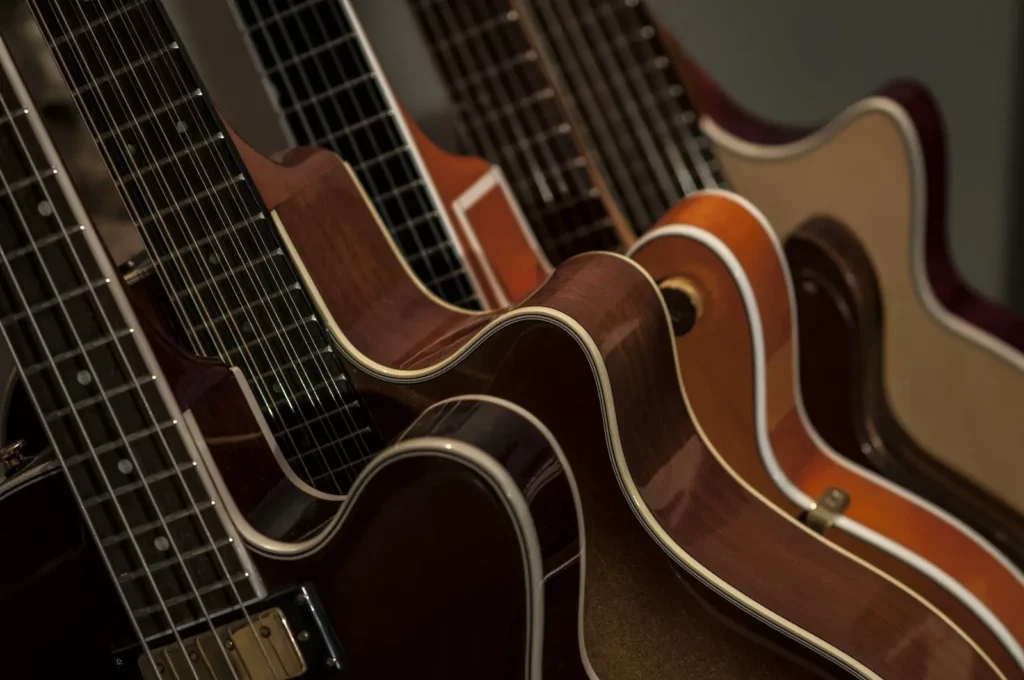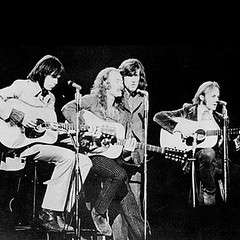Explore the rich musical landscape created by the iconic folk rock supergroup, Crosby, Stills, Nash and Young (CSNY). Their intricate guitar work, profound lyrics, and layered harmonies offer a treasure trove of exploration for any guitar player. In their collection of timeless classics and hidden gems, you’ll find a wealth of material that showcases unique guitar techniques ranging from strumming and fingerpicking to inventive chord arrangements and solo executions. If you want to master these techniques, begin by familiarizing yourself with CSNY’s greatest hits, paying close attention to the guitar’s role in their compositions.
Understanding CSNY’s Discography
The Quintessential CSNY Catalog: A Must-Have for Aspiring Guitar Masters
Lurking in the maelstrom of the 1970s countercultural revolution, a potent unison was born – Crosby, Stills, Nash & Young. The inimitable blend of their guitar playing styles birthed an entity that has since been etched deep into the annals of folk-rock. Today, we explore their eclectic discography to guide the intrepid guitar player seeking to master the indomitable CSNY guitar style.
Any CSNY voyage would be incomplete without an initial immersion into ‘Déjà Vu’ (1970). With classics like “Almost Cut My Hair” and “Teach Your Children”, it’s a sonic treasure trove of harmonic folk-rock delights. The alternating lead guitar parts demonstrate a union of styles that continue to inspire and educate guitarists on balancing rhythm and melody.
Neil Young’s standout tune, “Helpless” from the same album, is notable for its D-A-G chord progression that showcases Young’s distinctive picking style. It juxtaposes beautifully against Stills’ edgier guitar work on “Carry On,” where the blend of open tunings and modal scales provides a masterclass in rhythmic tension and resolution.
The live album ‘4 Way Street’ (1971) is an indispensable guide to understanding the interplay between the four guitarists. Listen keenly to the version of “Southern Man” for an audible lesson in seamlessly shifting dynamics from brooding verses to explosive chorus.
Young’s ‘After The Gold Rush’ (1970) and Nash’s ‘Songs for Beginners’ (1971) are notable solo ventures that showcase the individual styles within the CSNY matrix. Loosely strummed chord progressions in tracks like “Only Love Can Break Your Heart” or the intricate picking patterns of “I Used To Be a King” are beautiful examples of their guitar agility.
One cannot truly grasp the CSNY spirit without a deep dive into Stills and Crosby’s collaborative gem ‘Crosby, Stills & Nash’ (1969). In tracks like “Guinnevere” and “Suite: Judy Blue Eyes”, the arpeggiated chords seep wholesome undertones, while lending a unique vibrance to their lyrical imagery.
Curl around the brilliance of “Ohio” from the non-album single of the same name. The power chords strummed on drop D tuning give rise to a sonorous protest against the infamous Kent State shootings. It’s a perfect example of how they used their guitars not just as musical instruments, but as tools for social commentary.
Experiencing CSNY’s music is a transcendental journey, one that binds notes to narratives and chords to consciousness. These albums and tracks serve as a beacon for those eager to explore the quartet’s unique style. It’s a deep well of creativity and passion that resounds with the strum of every string, transcending boundaries of time and trend. For anyone wishing to master the CSNY style with six strings and a pick, this is the starting point, the fundamental CSNY primer to initiate a lifelong pilgrimage through the depths of diverse guitar playing styles.
Identifying Distinguished Guitar Techniques
Delving into the next realm of Crosby, Stills, Nash & Young’s extraordinarily textured guitar techniques, we meet with a splendidly distinctive characteristic – their truly unique sense of rhythm guitar. The authentic CSNY style goes beyond a simple strumming pattern for accompaniment, evolving into a tapestry of interwoven melodies and harmonies that create a rich percussive texture.
One cannot discuss CSNY’s rhythm guitar without mentioning a song like “Wooden Ships.” Here, Stills and Young’s rhythmic playing drive the song while Crosby’s arpeggiated chords add a simultaneous melody. The use of delay and reverb effects enhances the otherworldly psychedelic feel, taking listeners on an auditory odyssey that transcends the conventional definition of rhythm guitar.
Turning our eyes next to an exploration of a tuneful harmonic arsenal – specifically, the bold and eclectic use of suspended changeability. Pay careful listening to Nash’s ethereal, yet grounded piece, “Pre-Road Downs.” The chord degrees, herein, shift like dunes in the desert, ceaselessly, yet centrifugally, nose-diving into and out of suspended-second and suspended-fourth chords. This appears to manifest aural disorientation in the listener, instilling the buoyant sensation of feeling lost yet ecstatically anticipating what comes next.
From the perspective of lead guitar technique, often the initial thought is Neil Young’s biting solos that offer a stark contrast against the placid, almost pastoral soundscapes that CSNY crafts. However, it is essential to understand the duality embedded within the band’s lead guitar approach. One can hear Stephen Stills’ clean and polished lead lines during his solos, reminiscent of his Buffalo Springfield days, and intricately peppered with blues and country inflections. “Bluebird” offers a pristine example where the two styles are juxtaposed masterfully within the same piece.
While we are swept off our feet by their enthralling harmonies and compelling songwriting, it is significant not to overlook the role of fingerpicking in CSNY’s music. Fingerpicking is a technique that Crosby perfected during his time with The Byrds. It is most notable in his song, “Guinnevere,” where picking out individual notes results in a rhythmic resonance that is both lush and delicate. The exquisite complexity of this song’s guitar work has been said to make even seasoned musicians’ heads spin.
Last but in no way the least, an inseparable aspect of CSNY’s trademark sound lies in the complementary chemistry between the four individual guitar styles. As well demonstrated in their legendary live performance at Woodstock, CSNY’s talent lies not just in their ability to orchestrate their stringed symphony, but to do so while inducing the sense of unity so characteristic of their music. Each band member’s distinct style contributes to the harmonious whole without losing individuality – a metaphor for the band itself.

This insight into the guitar techniques of Crosby, Stills, Nash & Young uncovers a world of unity and wonder, beyond just evocative harmony and poetic lyricism. It’s a testament to the ability of four individuals to create a single, cohesive aural tapestry, blurring the lines between rhythm and melody, harmony and dissonance. The music of CSNY teaches us that sometimes, the whole is indeed greater than the sum of its parts.
Practicing CSNY Songs on Guitar
Stepping into the tuneful world of Crosby, Stills, Nash, and Young (CSNY), one can’t help but be swept away by the distinct harmonies, absorbing lyrics, and intricate, yet inviting, guitar technique. Before diving into each facet of CSNY’s guitar playbook, it’s beneficial to fully soak in their music, letting each strum, pluck, and chord settle into the marrow of your bones, to understand the profound affection these seminal musicians have for the six-stringed instrument they deftly play.

After investing your time learning and understanding CSNY’s unique guitar techniques and becoming familiar with their discography, the next logical step is to put theory into practice. Integrate their style into your guitar playing by starting with simpler songs before gradually advancing to their more technically demanding ones. Utilize resources such as guitar tabs, video tutorials, and sheet music to assist in your development. Through this immersive process, you’ll not only enhance your own guitar skills, but also explore the timeless musical legacy of Crosby, Stills, Nash, and Young. Enjoy the journey and keep the music playing!
Cover Photo Credit “crosby-stills-nash-young” by concertsdotcom is licensed under CC BY-NC-ND 2.0